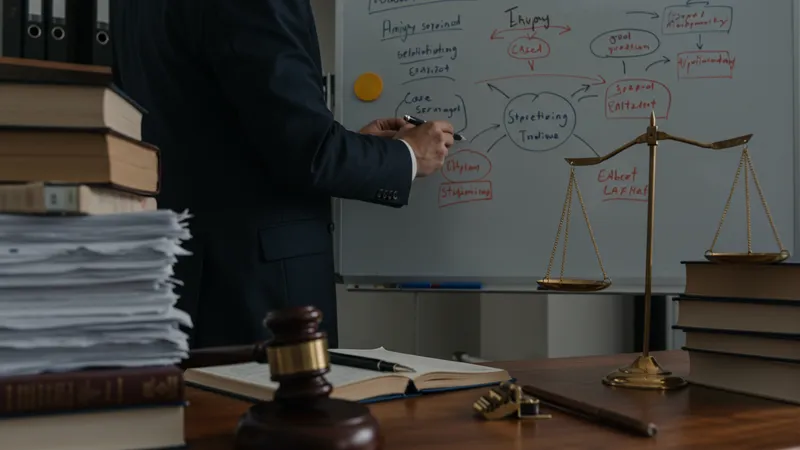

When a person is injured due to someone else’s actions, the aftermath can quickly turn overwhelming. Navigating complex compensation claims is rarely straightforward. In the United States, injury lawyers play a pivotal role in ensuring victims receive compensation that truly reflects the damages sustained. Rather than simply negotiating with insurance companies, these legal professionals engage in a comprehensive process—evaluating evidence, calculating damages, and advocating fiercely for clients in both negotiation and, if needed, at trial.
At the core, handling a compensation case means assembling all the pieces of a complicated puzzle: gathering medical documentation, liaising with experts, and meticulously assessing both current and future losses. Lawyers must be adept at translating the realities of an injury into compelling legal terms. The ultimate goal is always fair compensation—whether through settlement or litigation—so clients can focus on recovery rather than red tape.

Across the United States, injury lawyers regularly assess case value by analyzing not just medical expenses, but also lost earnings, pain and suffering, and long-term impacts. For example, Morgan & Morgan has built reputation by resolving thousands of sizeable personal injury claims, leveraging nationwide resources to support robust case-building strategies.
Meanwhile, platforms like Injury.com have streamlined the process for individuals seeking local representation. By connecting injured parties with trustworthy lawyers nearby, these platforms make specialized support accessible—often with no upfront fees, which is significant for those facing urgent financial pressures.
Some firms, such as Simmons Hanly Conroy, focus heavily on complex and high-stakes cases, including mass torts and catastrophic injuries. These lawyers often invest extensive resources into investigation and expert testimony, underscoring why contingency fees are standard—clients pay only if compensation is recovered.
Compensation structures are a defining feature: U.S. injury lawyers generally take cases on a contingency fee basis, ranging from 25% to 40% of recovered compensation. This aligns lawyer and client interests, but also means the lawyer must assess and build cases likely to succeed either at the negotiation table or in a courtroom.
The layers involved in these cases—from evidence collection to negotiation and potential trial—set the stage for deeper insight. The deeper details reveal even more valuable insights ahead, as we explore the unique approaches and challenges injury lawyers face within the U.S. compensation system.
In-depth case assessment is foundational to how injury lawyers handle compensation cases in the United States. Lawyers start by conducting exhaustive client interviews, gathering medical records, accident reports, and photographic evidence. They strategically analyze each document to determine what elements strengthen or weaken the claim. For example, lawyers at Morgan & Morgan often utilize accident reconstructionists or medical professionals to substantiate arguments about fault or injury severity.

U.S. injury lawyers must ensure all evidence meets the standards required by law. This includes medical documentation that clearly links injuries to the incident and proof of any lost wages. Should insurance companies challenge these aspects, lawyers are prepared to consult with independent specialists or explore additional sources of proof, such as security camera footage or witness statements, to reinforce the claim’s legitimacy.
Robust initial evidence gathering can set the stage for successful negotiations with insurance providers. Competitive platforms like Injury.com focus on matching clients to lawyers skilled in fast yet thorough evidence collection to maximize claim value. This process is critical, especially when the opposing party refutes liability or offers a low settlement.
Clients often underestimate the detail and documentation required for compensation. Injury attorneys educate their clients about the need for continuous record-keeping, such as receipts for medical expenses or diaries documenting pain levels. By staying organized from the outset, claimants and their legal teams can better withstand scrutiny during settlement talks or at trial, ensuring the compensation awarded is truly reflective of their losses.
Most personal injury claims in the United States are resolved through negotiation rather than going to trial. Injury lawyers deploy tailored negotiation strategies to achieve fair settlements; these may vary depending on the nature of the case and the opposing party’s tactics. For instance, large firms like Simmons Hanly Conroy often negotiate from a position of strength due to their reputation and experience with high-value claims.

A central component of these strategies is presenting well-organized evidence and documented losses. Injury lawyers know that comprehensive, detailed claims leave less room for insurance adjusters to contest the damages. By accurately calculating both special damages (like medical bills and lost income) and general damages (such as pain and suffering), lawyers put pressure on insurers to settle reasonably.
Throughout the United States, platforms like Injury.com also facilitate pre-settlement negotiations by aligning client expectations with legal realities. They provide resources that help clients understand the timelines and steps involved, so there are fewer surprises as negotiations unfold. Lawyers stay vigilant for unethical settlement tactics, such as attempts to delay or lowball offers, safeguarding client interests throughout.
Clients benefit from their lawyer’s negotiation acumen, as experienced attorneys are skilled at recognizing when a settlement offer is fair—or when the case should proceed to litigation for a potentially better outcome. The negotiation phase is therefore a pivotal moment in the compensation process, with lasting consequences for the injured party’s financial recovery.
Although most compensation cases settle out of court, a significant portion require formal litigation. In these situations, injury lawyers become legal advocates, developing arguments and presenting evidence before a judge or jury in the United States. Firms such as Morgan & Morgan are notable for their willingness to proceed to trial if negotiations do not yield adequate compensation.

Trial litigation involves meticulous preparation, including filing legal briefs, responding to motions, and managing expert witness testimony. The lawyer’s role expands from negotiator to strategic advocate. For example, Simmons Hanly Conroy lawyers often call on accident reconstruction specialists or medical experts to provide detailed, convincing testimony that helps jurors understand the full extent of a client’s injuries.
In the United States, trial outcomes are shaped by both legal expertise and the ability to communicate with ordinary citizens serving as jurors. Injury lawyers use compelling narrative techniques—bolstered by clear physical evidence—to ensure clients’ stories resonate and that damages are understood in human, not just legal, terms.
Whether presenting a straightforward car accident claim or a complex product liability case, successful litigation requires extensive knowledge of courtroom procedures and state-specific laws. For clients, choosing a lawyer with proven trial experience offers an extra layer of confidence if out-of-court resolution proves impossible.
One of the most distinctive features of injury compensation cases in the United States is the prevalence of contingency fee arrangements. Rather than billing hourly, lawyers such as those at Morgan & Morgan, Injury.com, and Simmons Hanly Conroy only receive payment if the client’s case results in financial recovery. This model aligns the interests of client and attorney, creating mutual incentive for a positive outcome.

Transparency is crucial in these relationships. Reputable U.S. injury lawyers clearly outline all fee percentages, potential case expenses, and anticipated timelines at the outset. For instance, Injury.com makes this process explicit through digital resources and easy-to-understand agreements, helping clients avoid confusion or unexpected costs after resolution.
Strong client-lawyer relationships are built on regular communication. U.S. injury attorneys frequently update clients about important developments—be it negotiation progress or litigation milestones. This proactive approach helps manage expectations and provides reassurance during what can otherwise be a stressful process.
Ultimately, the support of an injury lawyer can be transformative for someone facing the aftermath of a serious accident. By handling every legal aspect—from organizing evidence to arguing in court—these professionals give clients the support and expertise needed to pursue fair compensation and move forward with their lives.